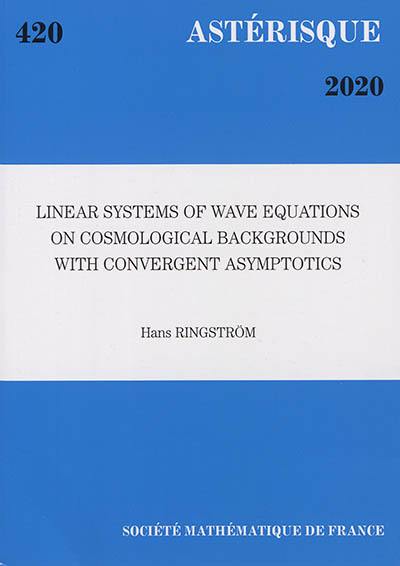
Serie : Astérisque. Vol 420
Paru le 15/10/2020 | Broché XI-510 pages
Professionnels
The subject of the book is linear systems of wave equations on cosmological backgrounds with convergent asymptotics. The condition of convergence corresponds to the requirement that the second fundamental form, when suitably normalized, converges. The model examples are the Kasner solutions. The main result of the article is optimal energy estimates. However, we also derive asymptotics and demonstrate that the leading order asymptotics can be specified (also in situations where the asymptotics are not convergent).
It is sometimes argued that if the factors multiplying the spatial derivatives decay exponentially (for a system of wave equations), then the spatial derivatives can be ignored. This line of reasoning is incorrect : we give examples of equations such that 1) the factors multiplying the spatial derivatives decay exponentially, 2) the factors multiplying the time derivatives are constants, 3) the energies of individual modes of solutions asymptotically decay exponentially, and 4) the energies of generic solutions grow as exp[exp(t)] as (...).
When the factors multiplying the spatial derivatives grow exponentially, the Fourier modes of solutions oscillate with a frequency that grows exponentially. To obtain asymptotics, we fix a mode and consider the net evolution over one period. Moreover, we replace the evolution (over one period) with a matrix multiplication. We cannot calculate the matrices explicitly, but we approximate them. To obtain the asymptotics we need to calculate a matrix product where there is no bound on the number of factors, and where each factor can only be approximated. Nevertheless, we obtain detailed asymptotics. In fact, it is possible to isolate an overall behavior (growth/decay) from the (increasingly violent) oscillatory behavior. Moreover, we are also in a position to specify the leading order asymptotics.